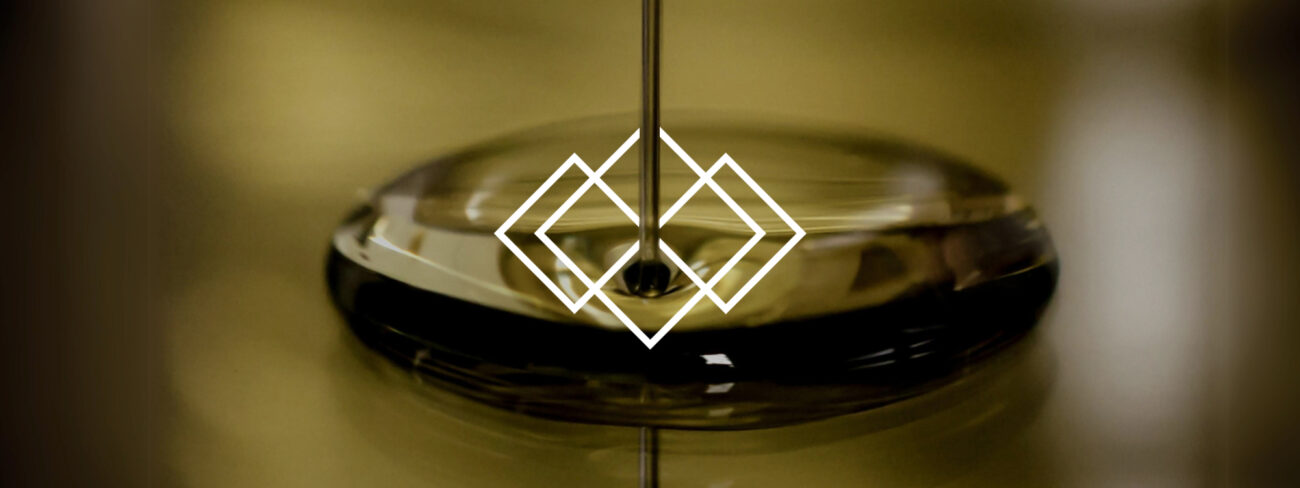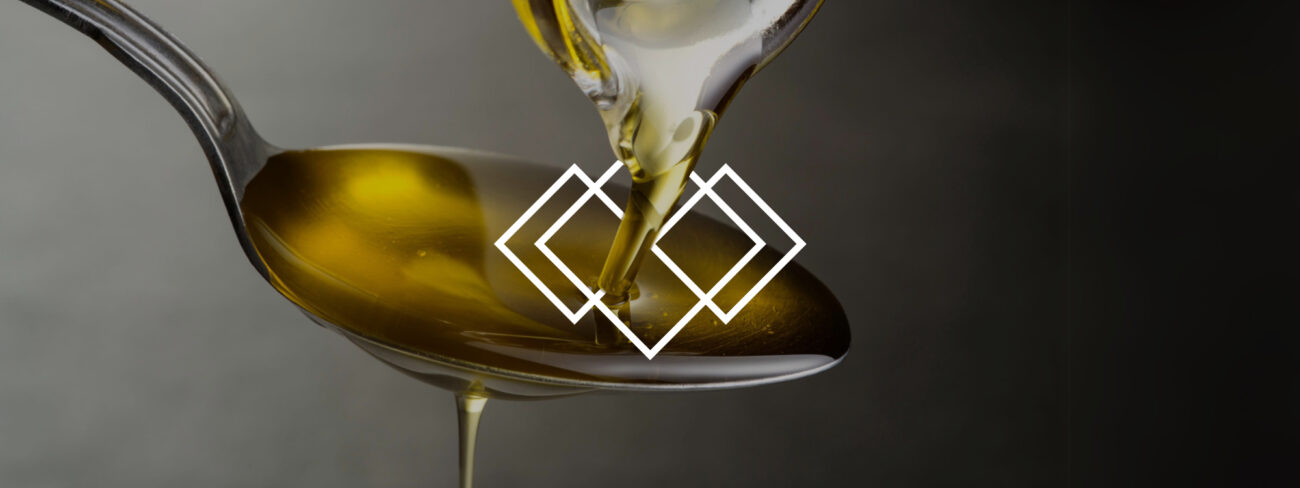- Emulsifiers in cosmetics are essential for creating a smooth, easy to spread and stable texture.
- Emulsifiers most often belong to the group of surfactants. Their action is to help combine two naturally immiscible solutions, such as water and oil.
- Emulsifiers used in the cosmetics industry can be of natural or synthetic origin. Natural emulsifiers have a weaker emulsifying effect and a higher price than synthetic emulsifiers, but they are inert to the skin and show additional skin care benefits.
- Selection of the right emulsifier should be based on the purpose of the cosmetic, its desired effect and active ingredients.
- Many emulsifiers also have other applications, such as in the pharmaceutical and food industries.
Cosmetics often consist of substances that do not combine naturally. The uniform consistency of a cream, paste or soap is achieved through the use of emulsifiers. Emulsifiers in cosmetics are characterized by the fact that they are not only effective, but must also be as neutral as possible towards the skin and the human body. Which emulsifiers are used in cosmetics? How do you choose the right substance for use in the manufactured products and where can you find it?
What are emulsifiers?
Surfactants (surface-active substances) are most often used as emulsifiers. These can be both ionic and non-ionic surfactants, as well as other chemicals such as stearates or kaolin (white clay) and bentonite.
Emulsifiers in cosmetics play a supporting role. They help to create a product with a smooth, even consistency – this is important not only for visual and sensory reasons, but also for convenience of use. Without emulsifiers, inversion or phase separation would occur – the cosmetics would layer and need to be mixed before each application. Thanks to properly selected emulsifiers that stabilize the product formula, the consistency of the cosmetic does not change even after a long time.
Emulsifiers additionally ensure proper viscosity and density of the emulsion. They are safe for the body, although some of them may have irritating effects. However, emulsifiers do not penetrate deep into the skin – they remain on the surface, forming a protective filter.
How do emulsifiers in cosmetics work?
Emulsifiers in cosmetics work at the phase boundary – due to their high solubility in various media, they penetrate to the point where two phases, such as water and oil, meet and reduce the surface tension at their boundary. This makes it possible to create an emulsion, i.e. an apparently homogeneous mixture that is actually a colloidal system where tiny droplets of one liquid are suspended in another.
Emulsifiers are most commonly used in products where aqueous and fatty solutions are present,as well as alcoholic, aqueous-alkyl and hydrocarbon solutions. Typically, a fatty-wax base and an aqueous solution are present in cosmetic and medical products. The type of emulsifier is selected according to the arrangement of ingredients in the product.
Examples of emulsifiers in cosmetics
The first medicinal preparations were made by crushing plant seeds in the presence of water, using the natural emulsifier, which is the protein of the seeds. In the 18th century, ways of obtaining emulsions were discovered by combining water with oils. Today, emulsifiers are used in cosmetics such as:
- Creams, balms, lotions,
- Toothpaste,
- Liquid soaps,
- Bath products,
- Shampoos and conditioners,
- Facial masks,
- Facial cleansing and care products,
- Shaving and depilatory products,
- Lipsticks,
- Cosmetic products for children.
Selecting the right emulsifier is not a simple task – consumers often prioritize both the safety of use and the effectiveness of the cosmetic product, as well as its affordability. Pleasant consistency and easy application are also qualities that customers pay significant attention to. High-quality emulsifiers for producing effective and health-safe cosmetics can be found in Foodcom’s product range.
Natural emulsifiers in cosmetics
Natural emulsifiers are products of plant or animal origin. They are often used in natural cosmetics and as additives to reduce irritation in synthetic preparations. Natural emulsifiers frequently possess inherent nurturing and soothing properties, aiding in the penetration of active cosmetic ingredients into the skin. Due to their structural similarity to human skin, natural emulsifiers effectively retain moisture in the skin, create a protective layer on its surface, and enhance the resistance of active ingredients to sweat or water. However, their interfacial tension-reducing effect is usually relatively low, requiring a larger quantity compared to synthetic emulsifiers.
The most commonly used natural emulsifiers include:
- lecithin – obtained from chicken eggs, fish or plants such as soybeans and sunflower; it softens skin and hair, stabilizes foam in washing products, is a good carrier of active substances, such as vitamins;
- modified starch – is used especially as an emulsifier and stabilizer in the food industry, but is also used in the production of cosmetics; it unifies and thickens the product formula, is gentle on the skin and hair, and has a moisturizing effect;
- gelatin – extracted from collagen from animal bones, skin and tendons;
- lanolin – contains cholesterol in its composition, is obtained from sheep’s wool, is often used in lipsticks, has moisturizing effects;
- beeswax – smooths and lubricates the skin, is used in lipsticks and children’s products;
- carnauba wax;
- jojoba oil;
- emulsifiers derived from oil;
- coconut oil acid polyglucoside;
- alginates from seaweed;
- xanthan gum and gum arabic.
Synthetic emulsifiers in cosmetics
Synthetic emulsifiers are substances that do not occur in nature and are produced industrially. They are cheaper than natural emulsifiers because the process of obtaining them is easier. They can be irritating or allergenic, so the addition of mitigating substances is often used. This includes such substances as:
- propylene glycol (PEG);
- diethanolamine (DEA);
- polysorbates – polysorbate 20 is made from natural coconut oil and ethylene oxide, and is excellent for dissolving essential oils in products whose base is water; it is gentle on the skin, and is used in baby oils, as well as lotions, creams and deodorants;
- polyglycerol esters, glyceryl stearate citrate (CSG emulsifier) – glycerol (glycerin) moisturizes the skin, cleanses and cares for delicate skin; it also has antibacterial and antiviral effects;
- crozine – produced from petroleum distillation residues;
- eucerin – includes cetyl alcohol and cholesterol;
- cetyl alcohol.
Other emulsifiers used in industry
Non-surfactant emulsifiers – powdered solids such as kaolin, bentonite or magnesium, calcium or aluminum stearate – are sometimes used. However, the emulsion obtained using them is not as durable.
Manufacturers of emulsifiers for the cosmetics industry
Examples of manufacturers of emulsifiers used in the cosmetics industry on the Polish market include Distripark, C.H. Erbslöh and Foodcom. The global market is dominated by companies such as Evonik, Lubrizol, BASF, Stephenson and Hallstar Beauty. Many chemical wholesalers also carry emulsifiers for cosmetics. It is important to choose an unspecified company, and emulsifiers of the best quality. Such products are provided by Foodcom.
How to choose emulsifiers for cosmetics?
The type of emulsifier used for use in a given product should be carefully selected, taking into account the target application of the cosmetic, its composition, the desired effect and other substances currently in its formulation.
The emulsifier should be indifferent to the main ingredients of the formulation, without altering their action. It should also not have negative effects on consumer health or an intense odor. When choosing an emulsifier, it is also worth looking at its properties, including the HLB (Hydrophilic-Lipophilic Balance) indicator, which tells you about the lipo- or hydrophilic potential of the substance. HLB can take values between 0 and 20. The higher the value, the lower the lipophilicity and the higher the hydrophilicity of the emulsifier, so HLB affects the nature of the mixture formed. This is important in the production of creams, for example – formulations produced using emulsifiers with an HLB below 7 form water-in-oil (W/O) emulsions, which are ideal for use on dry skin, while products with a higher value of this index form oil-in-water (O/W) emulsions, which are light and facilitate absorption through the skin.
Of course, depending on your needs, the main decision in choosing an emulsifier is whether to purchase a synthetic or natural emulsifier. Natural emulsifiers tend to be gentler on the skin, but because they are more difficult to source – also more expensive. Often, a mixture of several emulsifiers is used to get all the characteristics of interest.
A wide selection of emulsifiers possible for use in cosmetics production, both home and mass production, is available from the Foodcom store. The store’s advantage is, above all, its versatility – you will find products with a wide range of applications, from emulsifiers for cosmetics production, to substances used in agriculture, to ingredients used in the food industry, such as dairy. Many of the products on offer have versatile applications, for example, soy lecithin can be used both as an emulsifier for cosmetics and as an ingredient in preparations that are dietary supplements. The same is true of zinc oxide, which is used as a pigment in the production of paints or anti-corrosion coatings, for wood preservation, rubber and plastic production, as well as in pharmacology for the treatment of skin and digestive disorders, and in the cosmetics industry as an ingredient in acne skin ointments, baby hygiene products and UV protection creams.
Summary
Emulsifiers are substances widely used in industry. Their addition to cosmetics provides greater stability and improves the consistency of products and proper distribution. Emulsifiers are also used in food production – as an additive in breads to prevent them from turning black, in chocolates or frozen foods.
Choosing the right emulsifier is never a simple task, so it is important, first of all, to accurately determine the target action of the cosmetic being created and its chemical composition. The use of both natural and synthetic emulsifiers, as well as mixtures of several emulsifying compounds, such as the combination of a hydrophilic and lipophilic emulsifier, which increases the stability of the product, can be beneficial. When choosing an emulsifier, the purpose of the product is also important – other emulsifiers are used, for example, in baby products, others in moisturizing cosmetics, others in lubricating cosmetics. Regardless of the choice, always pay attention to the highest quality of products and their safety for the body.





![Zamykamy rok z przytupem - podsumowanie rynku dodatków w 2024! [65 Wydanie Biuletynu ADDITIVES] Zamykamy rok z przytupem - podsumowanie rynku dodatków w 2024! [65 Wydanie Biuletynu ADDITIVES]](https://foodcom.pl/wp-content/uploads/2024/12/newsletter-additives-summary-300x150.png)




